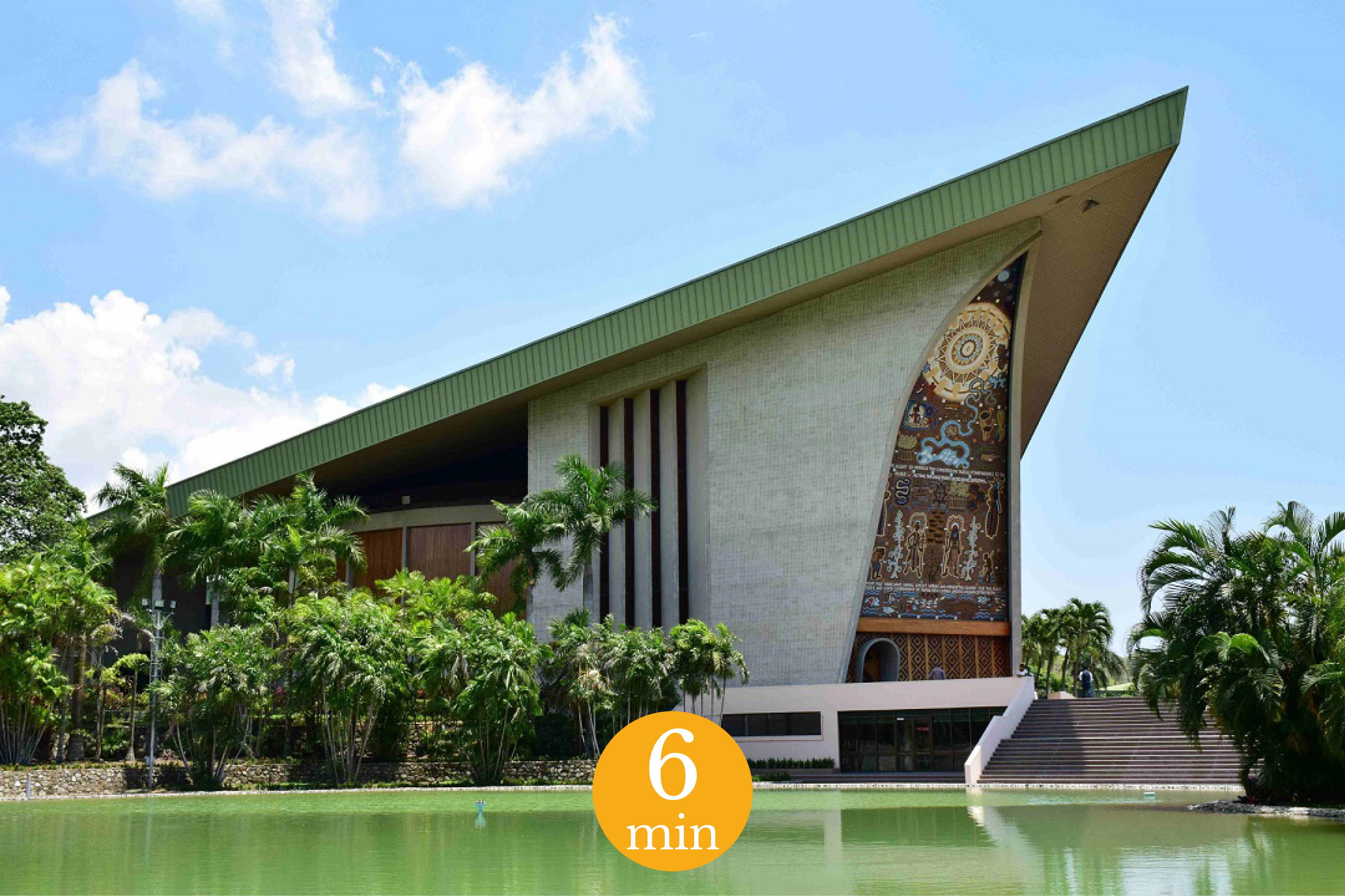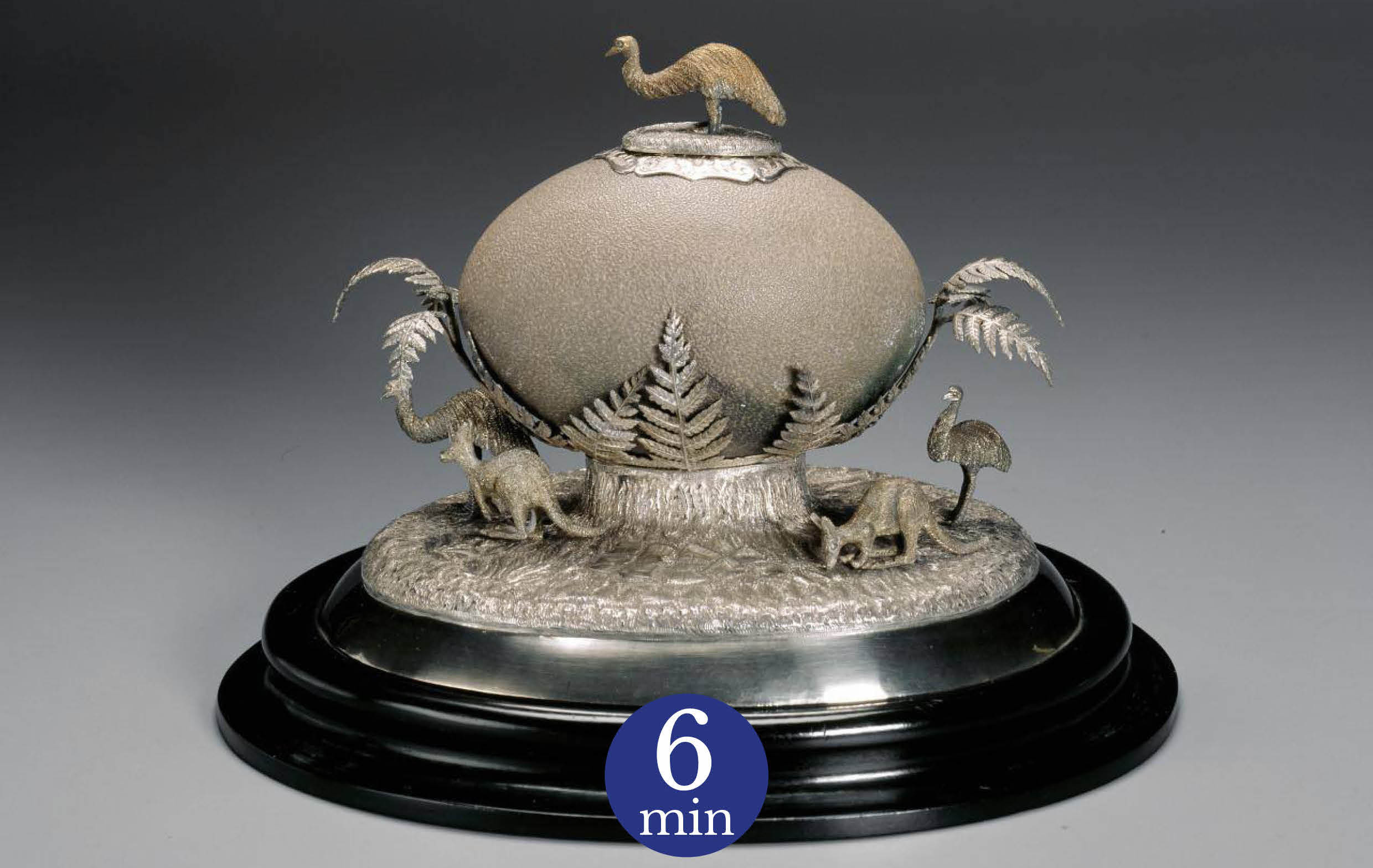For one year, the Rietberg Museum in Zurich is offering its visitors the opportunity to discover and question the history of the objects that make up its collections today. This exhibition, which is part of the museum's permanent tour, offers twenty-two focuses to help the public discover the people and the relational networks that lie behind the artefacts on display. Read More

Degradation of parliamentary sculptures: looking back at an iconoclastic episode in Papua New Guinea
In December 2013, the president of the New Guinea parliament, Theodore Zibang Zurenuoc, caused a stir in the country. Armed with an axe, he attacked the lintel adorning the parliament's frontispiece, irreversibly damaging the sculptures that adorned it. Although many voices were raised in Papua New Guinea to comment on this episode, not all of them were opposed to the president's actions, thus highlighting the debates that are shaking the country and its relationship with Christianity. Read More
Women from the Pacific: Emily Kame Kngwarreye
The Casoar team respectfully advises Aboriginal and Torres Strait Islanders people that this article includes images, works and names of deceased Indigenous people and may include images of artistic, cultural or intellectual property that may be of sensitive nature.
*Switch language to french for french version of the article*
Emily Kame Kngwarreye est sans doute l’une des artistes aborigènes les plus connues au monde. Son tableau Earth’s Creation a d’ailleurs détenu un temps le record de l’œuvre réalisée par un.e artiste aborigène la plus chère au monde. Mais saviez-vous que sa carrière de peintre fut aussi courte que fulgurante ? Et que son œuvre artistique ne commence pas avec la peinture mais avec le textile ? Aujourd’hui, Casoar vous emmène à la découverte de l’histoire de l’une des plus grandes artistes de la fin du XXème siècle.
Read More
From Queensland to the South Sea Evangelical Church: an evangelist mission in the Solomon Islands (Part Two)
En 1901, le Commonwealth Restricted Immigration Act prive la Queensland Kanaka Mission (QKM) de sa raison d’être en interdisant le recours à des travailleurs étrangers dans les plantations australiennes. Les missionnaires se trouvent alors face à la question du devenir des convertis chrétiens une fois rentrés dans leurs archipels d’origine. La situation des îles Salomon apparaît particulièrement préoccupante à leurs yeux car il n’existe encore quasiment aucune présence chrétienne dans l’archipel à cette époque et donc aucune église pour accueillir les nouveaux chrétiens. C’est ainsi que, depuis l’Australie, la QKM va se tourner vers les îles Salomon.
Read More
From Queensland to the South Sea Evangelical Church: an evangelist mission in the Solomon Islands (Part One)
Christian missions were involved very early in the history of colonisation in the Pacific. From the end of the 18th century, the conversion of local populations was a major challenge for the Western churches. It was seen as a divine mission: to "save" the souls of the "pagans" from the clutches of false divinities. Evangelisation, which was closely associated with the colonial process, was carried out by large religious organisations, such as the London Missionary Society in Polynesia and the Catholic Church through the Congregation of the Sacred Hearts of Jesus and Mary in Mangareva, as well as by a multitude of lesser-known missions, often stemming from Protestant currents of Christianity. Among these, one church in particular has left its mark on the history of the Solomon Islands archipelago to this day: the South Sea Evangelical Mission. Read More
From Exotic Curiosities to Primitivism
*Switch language to french for french version of the article*
This article was first written for the catalogue of the Bourgogne Tribal show's third edition in 2018.
"You walk towards Auteuil you want to go home on foot
To sleep among your Oceanic and Guinean fetishes
They are Christs of another shape and another creed."
Guillaume Apolinaire, « Zone », 1913.
These lines by poet Guillaume Apollinaire testify to his early interest in non-European art. The year was 1913, on the eve of the First World War, and his famous collection of poems Alcools, had just been published. Apollinaire did not know then that the West was about to change the way it looked at Pacific objects. This metamorphosis would deeply mark the history of the arts and ethnographic museums. Read More
Terrible Jungle : Lévi-Strauss est mort ce soir
Avions-nous vraiment beaucoup d’espoir en nous rendant dans cette obscure salle de cinéma, voir Terrible Jungle, l’un des derniers-nés du cinéma français ? Peut-être pas. La bande-annonce ne nous avait, certes, pas franchement conquis – même si, nous devons bien l’admettre, nous avions ri à la blague évoquant les revenus, ou plutôt les non-revenus de l’anthropologue. Mais CASOAR ne pouvait rater un des rares films mettant en scène l’anthropologie ! C’est à ce titre que nous vous proposons cet article, et non pas en tant que spécialistes de la Guyane française ou du cinéma. Read More
Qui de l’œuf ou de l’émeu ? À la découverte de l’orfèvrerie coloniale australienne
C’est un fait bien connu, les émeus pondent des œufs d’une taille impressionnante : 13 à 14 cm de long pour environ 900g. De quoi faire une omelette avantageuse ! La passion qu’ont brièvement inspiré ces œufs à l’aristocratie australienne de la fin du XIXème siècle ne doit pourtant rien à leurs qualités culinaires.
Le réveil des armures des Kiribati
Ceux d’entre vous qui sont familiers du Pacifique savent bien qu’avec de la noix de coco on peut tout faire. Tout ? Oui tout ! Du récipient à la cuisine en passant par des cordages et même des armures. Oui, vous avez bien lu, des armures. Ces objets singuliers étaient fabriqués principalement à partir de bourre de noix de coco tressée dans l’archipel des Kiribati. Aujourd’hui, ils sont l’un des principaux symboles culturels de la région.
Moa & Cie : drôles d’oiseaux disparus du Pacifique (Partie 3)
[Cette article est la suite de Moa & Cie : drôles d’oiseaux disparus du Pacifique (Partie 1) et de Moa & Cie : drôles d’oiseaux disparus du Pacifique (Partie 2) . Pour une meilleure compréhension du propos, nous conseillons aux lecteurs qui ne l’auraient pas déjà fait d’aller d’abord lire la première et la deuxième partie]
Après avoir exploré la Nouvelle-Zélande et la Nouvelle-Calédonie, c’est en Australie que nous terminons notre périple sur les traces des grands oiseaux disparus du Pacifique, il y a quelques 55 millions d’années.









